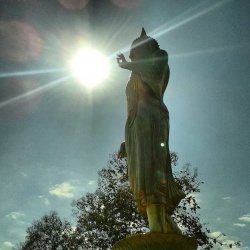The third eye
In numerous traditions, psychic vision is associated with the function of a third eye located in the center of the forehead.
According to ancient writings, the third eye enabled our ancient ancestors to observe their surroundings in a way to perceive psychic phenomena such as auras or visions, as well as infrasounds and ultrasounds, infrareds and ultraviolets, the spirits of the invisible world, etc.
The third eye is responsible for the perception of a very wide range of vibrations, luminous or not.
The third eye, also known as the Ajna chakra, is said to be associated with the deep inner level of being that we call the Spirit and the deeper part of our being that western traditions consider the subconscious or unconscious.
Through this chakra we begin to become aware of our interconnectivity or oneness with all existence.
On activation it creates a feeling of bliss and one develops a strong sense of detachment. We enter into a reflective mood and embedded intuitive knowledge on the absolute reality begins to surface.
It is this state of mind allows for Extra Sensory Perception, Telepathy, and Clairvoyance.
Ajna translates as 'command', and is considered as the eye of intuition.
In kundalini yoga, different practices are said to stimulate the Ajna chakra, including Trataka (steady gazing), Shambhavi Mudra (gazing at the space between the eyebrows), and some forms of Pranayama (breath exercises).
Meditation upon Ajna supposedly grants the following siddhis or occult powers; to quickly enter anothers body at will; to become omniscient; he realizes unity with Brahman; and he has the ability to create, preserve and destroy the 3 worlds.
When something is seen in the mind's eye, or in a dream, it is being 'seen' by Ajna.
It is a bridge that links gurus with disciples, allowing mind communication to occur between two people.
The sense organ and action organ associated with Ajna is the mind in both cases. In the Kabbalah, there are 2 sephiroth located on the 6th level, associated with the left and right eye.
They are called Chokmah, wisdom, and Binah, understanding, and it is at these points that the 2 side pillars of mercy and severity terminate, while the central pillar carries on rising to kether, the crown.
This psychic center is also found in Tibetan Buddhism, Mahayoga, Qigong, and other many traditions.
The third eye is outside of linear time as we normally experience. The past and future timelines become equally real as the present.
The classic symbol of the All-Seeing Eye is a representation of the third eye, and also of the functions of the higher self - its omniscience, omnipresence, and omnipotence.
Our eyes are linked by a complex network of nerves to two glands situated in the center of the head - the pineal gland and the pituitary gland.
In addition to their purely physiological function, these two glands constantly receive external vibrations that affect our eyes, yet due to their vibratory frequency, they do not create any impressession that can be interpreted directly by our mental processes.
The role of our pineal and pituitary glands is precisely that of interpretation, thus enabling us to become conscious of phenomena that are called extrasensory, or if you prefer, psychic.

